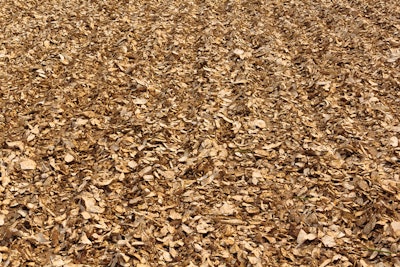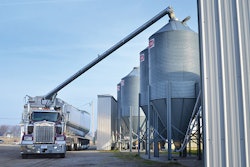
Cassava is a plant that is very tolerant to poor growing conditions as it can be cultivated in regions suffering from poor soil, droughts and even frequent plant diseases. Under such conditions, it yields about 13 metric tons of tubers per hectare. Of course, when grown in near-ideal (tropical) conditions, yield can reach up to 80 metric tons of tubers per hectare.
Currently, cassava is the second largest carbohydrate-rich crop worldwide, with over 9 million hectares of cultivated land devoted to cassava production in Africa and Asia. Maize surpasses cassava in global tonnage, whereas cassava is followed by rice — the second position of which has overtaken only very recently. In fact, global cassava cultivation expands in Asia, Latin America and Africa due to high demands from the human, feed, industrial starch and ethanol industries.
Cassava leaves can be dried and milled to create cassava leaf meal, a material rich in protein and fiber, but low in energy.
Thailand is the largest exporting country for cassava products, worldwide. It achieved its dominating position in the international market due to its high production levels and increasing demand for cassava products from Europe, starting in the 70s and 80s. However, in total productivity, Thailand is surpassed by Nigeria (leader) and Brazil, two countries that use their local cassava internally. Indonesia, Congo and Ghana follow Thailand in annual production levels. As absolute numbers are difficult to establish, the above ranking is best viewed as the top-six producers of cassava internationally.
Nutritive value and cyanide
As a plant, cassava is characterized by an enlarged, underground tuber that is rich in starch and poor in protein, along with a sizeable fraction of fibers (peel). The above-ground part is woody and thus unsuitable as an animal feed ingredient, but the leaves can be a rich source of protein. In fact, the combination of tubers and leaves create a very balanced combination.
Raw cassava tubers, which are considered the main product, contain large amounts of cyanogenic glucosides. These release cyanide when the plant is attacked by animals (eaten), as they co-exist with enzymes that remove the sugar part, which keeps the complex from damaging the plant. There are two types of cyanogenic glucosides in cassava: linamarin and lotaustralin, the first making up to 93 percent of total. Released cyanide is highly toxic to animals causing asphyxia and death. As such, its levels must be controlled by processing.

Cassava tubers must be peeled, shredded or sliced and then dried before they become suitable for consumption. | Prajit54, Dreamstime.com
Raw cassava tubers are first peeled, and the resulting pulpy material is sliced or shred into small pieces. These are left to dry in the sun or dried in ovens. The released linamarase enzyme comes into contact with the cyanogenic glucosides and releases hydrogen cyanide (HCN), which is volatile and evaporates. As sun drying takes longer than oven drying, the former method is more effective in reducing cyanide levels. In either way, cyanide levels are reduced by as much as 90 percent or more by this very simple processing. For example, raw pulp contains as much as 200 mg/kg HCN, whereas these levels are reduced to 31 and 27 mg/kg, by oven-and sun-drying, respectively.
Read more: 7 alternative vegetable protein sources for broilers
It merits mentioning that the whole tuber contains as much 400 mg/kg HCN, with the peel containing as much as 800 mg/kg. The leaves are even richer in this compound, containing up to 1,500 mg/kg. Finally, there are several varieties of cassava, ranging from 75 to 1,000 mg/kg HCN, whereas factors such as soil conditions, fertilizer and weather also affect the concentration of HCN.
Cassava products
Cassava chips (the peeled and chopped part of the tuber) are the main product of cassava production. It takes two to three days of sun drying for chips to become suitable for consumption by animals. They vary in size, composition and form, and they are not ideal for international trade. Instead, cassava chips are formed into uniform pellets, which are less bulky, and this is the main international commodity. Cassava meal is called the dust left from the pelleting process. It is low in starch and rich in minerals, especially from soil contaminants. Because of this, it is not a prime feed ingredient, and it should not be confused with milled (ground) chips or pellets.
Cassava peel is not only richer in cyanogenic glucosides, but it also contains less starch and even less protein than the pulpy interior of the tuber. As such, it is not a suitable ingredient for monogastric animal feeds. Nevertheless, peel from low-HCN varieties can be an alternative form of nutrients, especially of fibers, in other species (ruminants), when premium feed ingredients are not readily available or too expensive.
Cassava leaves can be dried and milled to create cassava leaf meal, a material rich in protein and fiber but low in energy. Again, care should be taken to account for the very high levels of HCN in raw leaves, which can be reduced by proper processing, timing of their harvest and variety selection. As up to 10 metric tons dried cassava leaf meal can be produced per hectare, this is a significant by-product, suited especially as an animal feed. In general, it can be regarded similar to alfalfa, always taking into account its toxicity issues due to HCN.
When fed to poultry, diets based on cassava chips/pellets will require supplementation with synthetic or natural pigments because the roots are devoid of them. In contrast, leaves are a good source of carotenoids, similar to alfalfa.
A significant feed ingredient
Cassava chips and pellets remain the most well known commodity of cassava origin, but cassava leaf meal can also become a significant feed ingredient under local conditions. Knowledge of HCN levels of any cassava product remains the most crucial factor that determines its use in animal feeds.















